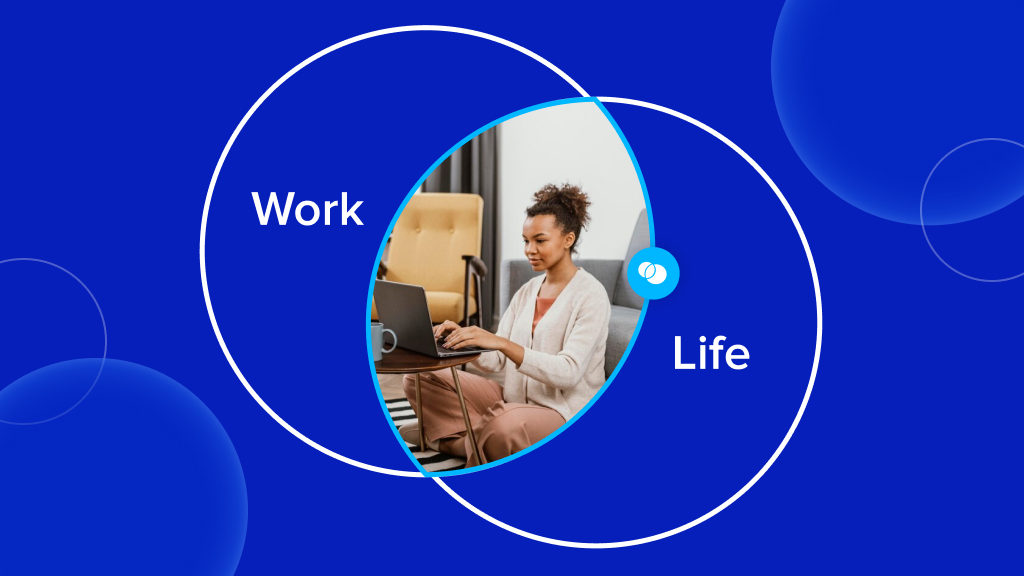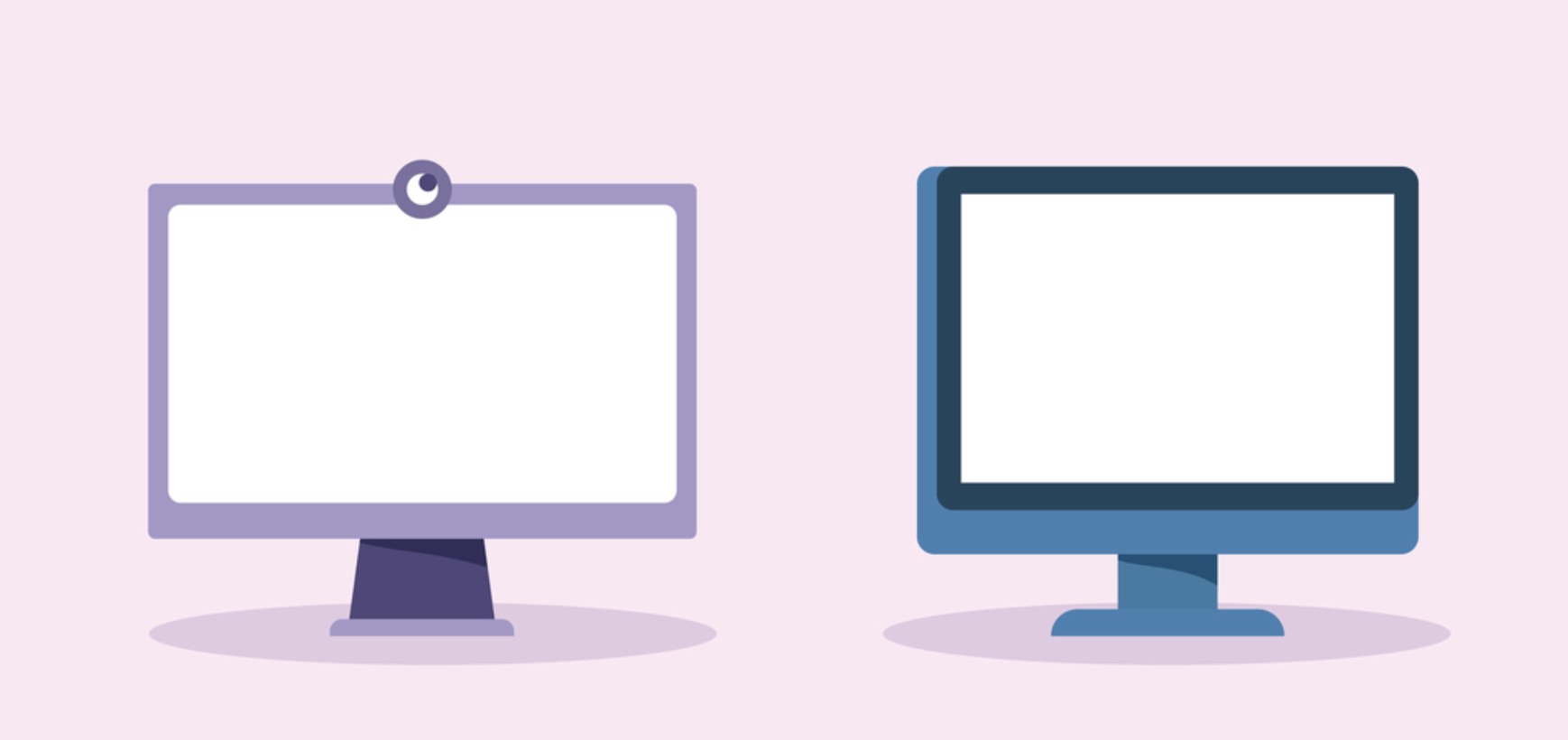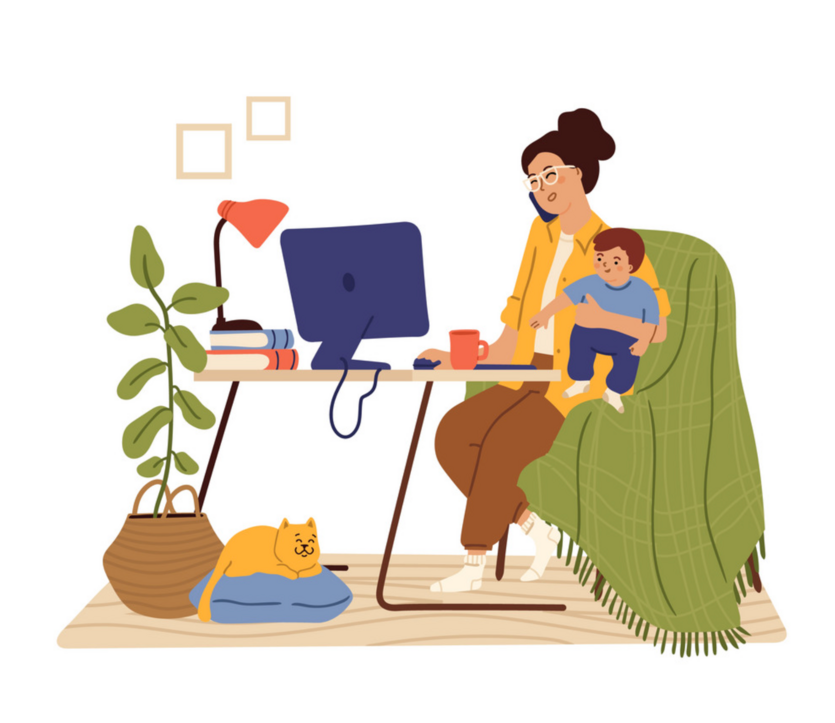Boundaries. They’re instrumental in every aspect of our lives. We set boundaries in our relationships, for our children, work, and for ourselves. They give us the space and time we need to recenter and recharge so that we can be fully present and focused on the task or interaction at hand. Boundaries help us establish a balance between the important things (and things we don’t always want to do) in our lives. Not to beat a dead horse, but COVID threw a wrench into our delicate systems of boundaries and borders that many of us, including myself, painstakingly built and continue to struggle with maintaining. Suddenly, and dramatically, the boundaries between our work and personal lives were torn down.
Many newly initiated remote workers were bewitched by the novelty and convenience of working from home. You get to sleep in a little, pop in a load of laundry between Zoom calls and shed the gauntlet-like commutes we’d grown accustomed to. I, for one, was extremely grateful to be able to work from home. The pandemic kicked off 2 months after our daughter was born and I was privileged to be able to experience all of “the firsts” many parents don’t get the opportunity to. After a few months, the novelty wore off and that’s when reality began to creep in.
Struggling in a remote work environment
Navigating the crossroads between work and personal life can be complicated to begin with but even more so when your home doubles as your office. Focused and dedicated workspaces are now multi-purposed rooms—a busy kitchen or a playroom filled with a cacophony of children’s noises. As lovely and charming as children can be, they can make it really hard to separate work time from parental duties. This blurring of professional and personal boundaries is even more of a challenge for individuals who come from cultural backgrounds where communal living spaces are the norm, and personal space is a rare find. The lack of a clearly defined workspace also makes it difficult to know when it’s time to shift from the professional to the personal. This blending of roles and environments not only exacerbates stress but also paves the way for issues like burnout, anxiety, and diminished productivity.
Overlapping Spaces: A Breeding Ground for Stress
When it comes to working remotely, the most obvious challenge is the overlap of professional and personal spaces. Your dining table now doubles as your conference room, and your kids’ playroom or your bedroom may have to suffice as your new office. This overlap isn’t just a logistical challenge; it’s a psychological one too. The signals that once marked the beginning and end of the workday, like the commute or the casual chat with your colleagues while you’re grabbing a cup of coffee before heading to your desk, are now missing. As a result, the boundary between “work mode” and “home mode” becomes increasingly blurred, setting the stage for increased stress levels.
When 9-to-5 Becomes 24/7
With the spatial boundaries blurred, time boundaries also fade from clarity. The clock on the wall becomes less of an indicator for work hours and more of a decoration. Always working from home can easily turn into always working Emails and Slack notifications sneak into family dinners and much needed relaxation time. The lack of distinction between work and personal time leads to overworking, and consequently, has an impact on the quality time you spend with loved ones and with yourself. There is also the unspoken pressure that working from home applies to your thoughts. You find yourself working more than you normally would simply because your physical presence is no longer easily visible as an indicator that you’re really working and not slacking off.
Surrounded, yet Alone
On top of the struggles with time and space management, remote work often brings an unexpected feeling into the mix: isolation. It’s paradoxical to feel alone when you’re surrounded by family or roommates; yet, it’s extremely common. Zoom and Teams meetings don’t really cut it and can’t replace the nuanced communication and connections that occur when you’re physically present with other people. That lack of genuine social interaction, mixed with the pressure to manage home and work life simultaneously, can make you feel isolated even in the most busy homes.
How to set boundaries for balance
Time
The ambiguity and challenges of remote work require the same fundamental tool as all of our other relationships in life; clear boundaries. Constructing boundaries takes practice and repetition, but once we begin this practice, we usually experience the benefits pretty quickly. So where do we start? I’ve found that having something I do on a regular basis before work helps me to enter into my “work mode”. It’s my replacement for the podcast-filled commute and bumper-to-bumper traffic that ushered in the workday.
We are ritualistic creatures by nature. Rituals help us to connect abstract or ethereal concepts to a more tangible reality; something we can see, touch, smell, or hear. They help us mark the beginning or end of stages in our lives and are a powerful tool we can employ to begin constructing our work/life boundary. These rituals will act as the physical indicator of when it is time to shift between these two competing worlds. For example, maybe you exercise in the morning. After you shower (and I hope you are showering) and dress (pants too), donning the last article of clothing is your signal to log on to your computer and get going. Or maybe you’re into meditation, which is a great way to manage stress, and the end of your practice marks the beginning of your workday. Alternatively, if you don’t like the concept of ritual, you can think of it in terms of habits.
There’s a book I found really helpful titled “Atomic Habits” by James Clear. One of the simple but effective concepts discussed is habit stacking. The idea is to identify a habit you already have and then add or “stack” your new behavior on top of that. This concept helps me in establishing the start time for my workday. Instead of thinking “It’s 9 a.m I have to start work”, which you can easily rationalize into “I don’t have a meeting until 9:30 I’ll start then”, you start work immediately after you’ve completed something you already do regularly. For example, after I take my vitamin, then I will log on to my computer. Or after I’ve dressed post-workout, then I will start my workday. The reason this is more effective than simply willing yourself to work at the same time daily is that you’ve already had these behaviors built and strengthened over time. Attaching the boundary for the start of the work day to these already ingrained behaviors makes it more likely that you’ll stick to it.
Breaks. It has to be mentioned here. Working from home can bring about a sense of comfort where you don’t always feel like you’re at work and therefore end up feeling like you have to work non-stop out of some misplaced sense of guilt. That’s absolute malarky. Failing to take any breaks is a surefire way to dampen productivity and increase burnout. You have to set aside some time for breaks throughout the day whether that is to stretch, walk around the block or just get away from the screen. This time helps with fighting brain fatigue and resets you back into a more conscious work mode. So allow yourself brief disconnects; your productivity and mental health will flourish.
Knowing when to end the work day is probably the most critical boundary to establish and for many, including me, is the most difficult because work is no longer contained in the neat little computer box and has crept its way onto our smartphones. We need to have a clear indicator when it’s time to stop working in order to maintain a healthy psychological life. You can use the same strategy outlined above to help but I’ve found that I need to do a little bit more to help establish this particular boundary. Maybe you have a signal, such as your partner or children returning from home or you need to set an alarm. Whichever method you employ to signal the end of work, it’s really important that you explicitly turn off all notifications; Slack, Teams and email. If your company uses something like Venn’s MDM solution, turn off the work profile on your phone and use your morning ritual to signal the time to re-enable it. This may sound extreme but for some of us it’s a critical step to help exit “work mode”.
Space
The spaces in which we live and work aren’t just physical spaces that we embody. They play a significant role in our mindset, setting the tone for our day and how productive we are, or are not, going to be. Overlooking how important our spaces are for our work and personal lives can wreak havoc on both. If you have a dedicated office in your home then you have a head start. But let’s be honest, not everyone has the luxury of a separate home office and instead must use a corner of a bedroom, the dining room table, or the kitchen counter. It’s certainly a bit more challenging than having a dedicated office but totally doable. Start by choosing a ‘work corner’ that will transform into your dedicated workspace during working hours. If your living space is shared with a roommate or family, a little diplomacy goes a long way. You’ll need to have an open conversation about the importance of this space during those dedicated work hours and make sure you’re on the same page.
What your workspace looks like also has an important impact on your mood and productivity. If the space is cluttered and chaotic, chances are you’re going to feel that way too. Take a couple of minutes before you start working to clean and organize your workspace. No empty coffee cups or cheese doodles from the day before. Adding things to the space is helpful too. It’s not just about what isn’t there (see above) but what is. I personally like to keep a small plant on my desk. I don’t know what it is but it makes me feel calm and peaceful. I also keep a book or two next to my computer that is geared toward my role as a product manager. It can be anything that inspires in you the feelings of peace or focus. Just make sure it’s a visual cue that helps you switch into “work mode”.
If your space is temporary during work hours and transforms into the place where you’ll be eating, you’ll have to be a bit more creative. Choose something, some icon or object, that you can easily move that will act as the representation of your workspace. It could be a chess piece, a specific book, whatever. The point being is that the object signifies that space is purposed for working, and its absence signifies the space has been turned over to its other function.
Finally, one space that is often not discussed but is equally important, is the digital space. Since we’re discussing boundaries in a remote-work environment, our laptops/desktops are often used for both work and personal uses. Unless you’re on an explicit break, try not to do any personal browsing or tasks on your work device during that time. Context switching like this creates an egress point where our work and personal modes start to commingle. If you’re using Venn on your laptop, then the line between your workspace and personal space is easily identified by the Blue Border. If it’s not blue, it’s for you and only you. This makes it easier for you to seamlessly move between your work and personal life on your laptop without worrying about things getting mixed together and ensuring your personal privacy.
Connection
We are social animals, albeit to varying degrees, and we need to connect. This cannot be overstated. Real social connection is part of the bedrock of a healthy life. This doesn’t mean that you need to be a social butterfly or always be out and about, but it does mean that video conferencing isn’t going to cut it. You may be thinking “I have a partner or a family that I am with daily so I’m covered.” For some, this might be enough but for others it’s definitely not. I’ve had this conversation with many of my colleagues. We love our families. They’re the joy of our lives but we have other social needs that they cannot and are not responsible for meeting.
To truly thrive in a remote-work paradigm, we need more than just those family interactions. We need other social interactions that fulfill us in different ways. This could be a virtual coffee break with a colleague, a bite with a friend or participation in a sport (a couple of us dig jiu-jitsu). I know for one of my colleagues a trip to the gym and just being around other people doing the same thing works for them. These other interactions are important for our mental and emotional well-being, which determines how well we can maintain the boundaries between work and our personal lives.
Venn: A Purpose-Built Solution for Setting Boundaries
Throughout this blog, we delved into how the modern workforce is increasingly relying on personal devices for work, and how that shared use can create blurred lines between our work and personal lives. At Venn, this was a problem that we deeply felt needed a solution, which is why we built the first purpose-built technology for Secure BYO-PC. Venn’s Secure Enclave is incredibly easy to deploy to a remote workforce. The Blue Border that surrounds applications when they are running in the enclave serves as not only a psychological cue for the user that they are in their “workspace”, but represents the technical boundary that Venn sets between work and life. The Secure Enclave keeps work profiles, data, and internet traffic separate from personal activities, ensuring that company data remains secure, and your personal life stays personal. It brings peace of mind, allowing you to use the same device for multiple purposes without compromising on either security or privacy. Venn’s Blue Border isn’t just a novel feature; it’s a boundary for your digital life, making it seamless to balance the dual roles our devices play.



